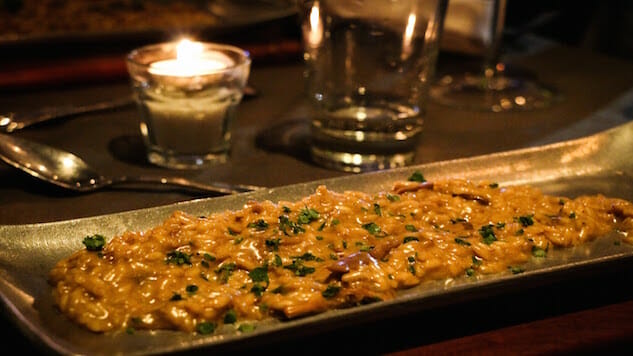Argentina: Running a Restaurant With 40 Percent Inflation
Photos by Camille Ayral
My parents like to reminisce about how much gas prices have changed since their childhood. In Argentina, we talk with the same sense of nostalgia about grocery prices from six months ago.
In the four years I’ve lived in Buenos Aires, a café con leche has gone from an average of 10 pesos (US$2.50 at the time) to well over AR$40 (still US$2.53 at today’s exchange rate) The value in US dollars hasn’t changed significantly over the years, but the impact on Argentines’ wallets is amplified by the fact that salaries (in pesos) rarely keep pace with inflation, making it harder and harder to afford the same food items over time.
Inflation, which hovers over 40 percent yearly at the moment, is not new to Argentines, who have lived the tumultuous economic roller coaster of hyperinflation both before and after the country’s 2001 economic crisis.
With food prices increasing faster than any other category, nowhere is inflation more present than in the kitchen. So what is it like to run a restaurant in a place where you’re not sure how much a keg of beer or a kilo of beef will cost you next week, let alone next year?
Mariano Gilligan co-owns La Puerta Roja, a punky bar with a rock vibe and great spicy Indian curry, and El Banco Rojo, which offers creative burgers, craft beer and inspired empanadas with curious ingredients. Puerta Roja has been around for almost 10 years, while Banco has just turned 5. Both are well-known favorites in the historic San Telmo neighborhood of Buenos Aires, and they’re both always full.

Mariano says he’s not always aware of inflation’s relationship with menu prices until, “sometimes the manager of Banco will come to me and say, ‘hey Mariano, because of the price increases for this empanada, which we sell for 15 pesos, is costing us 18.’”
How, then, can Banco Rojo and Puerta Roja manage to continue growing when other restaurants in the city are being strangled by soaring food and utility prices, and fewer people are choosing to eat out?
“It’s easy,” says Nacho, Mariano’s younger brother and purchasing manager of the bar. “There are people who believe that you open your business and you can sell at whatever price you want. They don’t think about the whole business.” Instead, Nacho insists that prices must be raised only when absolutely necessary.
Banco Rojo prefers to keep their customers coming, rather than to allow them to bear the costs of inflating food prices. Adrian Genta, manager of Banco Rojo, admits that “sometimes we prefer to absorb inflation rather than to raise prices.”

Banco Rojo’s “La Borracha” burger with fries, for 95 pesos. Photo courtesy of Banco Rojo
-

-

-

-

-

-

-

-

-

-

-

-

-

-

-

-

-

-

-

-

-

-

-

-

-

-

-

-

-

-

-

-

-

-

-

-

-

-

-

-

 La Locanda’s famous chocolate mousse, as chef and owner Daniele Pinna mixes in the special ingredient: olive oil. Photo: Camille Ayral
La Locanda’s famous chocolate mousse, as chef and owner Daniele Pinna mixes in the special ingredient: olive oil. Photo: Camille Ayral






































